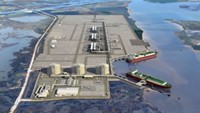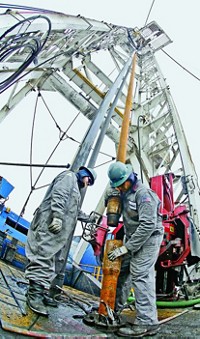Advertisement
Grab your lab coat. Let's get started
Welcome!
Welcome!
Create an account below to get 6 C&EN articles per month, receive newsletters and more - all free.
It seems this is your first time logging in online. Please enter the following information to continue.
As an ACS member you automatically get access to this site. All we need is few more details to create your reading experience.
Not you? Sign in with a different account.
Not you? Sign in with a different account.
ERROR 1
ERROR 1
ERROR 2
ERROR 2
ERROR 2
ERROR 2
ERROR 2
Password and Confirm password must match.
If you have an ACS member number, please enter it here so we can link this account to your membership. (optional)
ERROR 2
ACS values your privacy. By submitting your information, you are gaining access to C&EN and subscribing to our weekly newsletter. We use the information you provide to make your reading experience better, and we will never sell your data to third party members.
Environment
Natural Gas Dominates U.S. Energy Projections
by Steven K. Gibb
April 20, 2015
| A version of this story appeared in
Volume 93, Issue 16
Growth in its domestic production will cause natural gas to replace naphtha feedstocks in coming decades and will expand bulk chemical manufacturing, the Department of Energy predicts. Consumption of natural gas and hydrocarbon gas liquids (HGLs) is expected to increase by more than 50% from 2013 levels by 2040, according to the government’s most likely forecasts for the next quarter-century. U.S. production capacity for methanol and ammonia for fertilizers and in ethylene catalytic crackers will expand, the report says. “With sustained low HGL prices, the feedstock slate continues to favor HGL at unprecedented levels” over naphtha feedstocks, it adds. “DOE’s projection for continued growth in domestic natural gas production is terrific news for U.S. chemical industry investment,” says the American Chemistry Council, a trade association. DOE predicts that the U.S. will become a net exporter of natural gas as soon as 2017 and anticipates prices for electricity to grow 18% by 2040. CO2 emissions are expected to remain below their 2005 level through 2040.





Join the conversation
Contact the reporter
Submit a Letter to the Editor for publication
Engage with us on Twitter